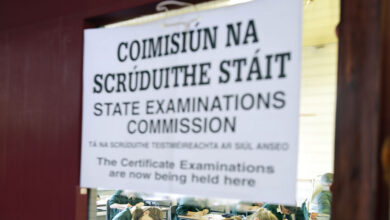Léargas: Opportunities in education

Léargas, Ireland’s national agency for Erasmus+ and other EU programmes, supports organisations and individuals to access funding and to engage in European initiatives like eTwinning, EPALE, and training and cooperation activities (TCAs).
Erasmus+ funding opportunities
There are two main funding avenues available across school, adult education and VET sectors. Both avenues that enable teachers, facilitators, learners, and staff to participate in international exchanges, share best practices, and develop impactful projects that benefit communities.
Key Action 1: Mobility projects (international learning exchanges)
Mobility projects are essentially learning exchanges where participants travel to another country to train, job shadow, or learn. The organisation or school applies for funding to prepare and manage the project, including costs of travel and participation.
Key Action 2: Partnership projects (collaboration with international partners)
A partnership project is where an organisation works with other relevant groups in different countries to exchange ideas or to develop, transfer or implement innovative practices. Funding is available for Irish organisations, institutions, companies, and research organisations that are active in adult education, school education, vocational education and training, or youth.
Visit the Léargas website at www.leargas.ie to find out more about each key action and the possibilities for your specific sector. The key action 1 application deadline closes by 20 February 2024. The key action 2 application deadline closes by 5 March 2024.

Exploring pathways to Erasmus+ and building capacities
Léargas also manage other European initiatives which can serve as a pathway to Erasmus+, allowing participants to dip their toe into European programmes and exchanges before undertaking an E+ project.
These initiatives are also great for building capacity and enhancing ongoing Erasmus+ projects. They provide valuable forums, innovative ideas, and educational resources that enrich learning experiences and enable networking and partner finding. Participation in any of the below will help organisations develop the skills and competencies to deliver an impactful Erasmus+ project.
EPALE – Electronic Platform for Adult Learning in Europe
EPALE (Electronic Platform for Adult Learning in Europe) is an initiative funded by the European Commission that serves as an online platform for professionals and stakeholders in the field of adult education. EPALE aims to facilitate knowledge sharing, networking, and collaboration among individuals and organisations involved in adult learning across Europe.
This platform provides a space for adult educators, trainers, researchers, policymakers, and other stakeholders to access and share resources, best practices, and insights related to adult education. EPALE promotes the exchange of ideas, promotes professional development, and supports the continuous improvement of adult learning practices. It plays a pivotal role in enhancing the quality and effectiveness of adult education efforts throughout Europe.
To learn more visit www.leargas.ie/epale/
eTwinning – the digital platform connecting schools in Europe
eTwinning is funded by the European Union and is a free online platform connecting more than one million teachers across Europe. It supports primary and post-primary schools to fosters digital collaboration and partnerships among schools across Europe. It provides a safe and secure online platform for educators and students to connect and work together on educational projects in any curricular area, using information and communication technology.
The programme aims to promote cross-cultural understanding, innovative teaching practices, and the exchange of knowledge and experiences. It serves as a valuable tool for schools to initiate and develop international collaborations, enriching the educational experience for students and educators alike.
To learn more visit www.leargas.ie/etwinning/
Training and cooperation activities
Across sectors, Léargas organise short training courses and cooperation activities, both in Ireland and in other countries. Many are open to newcomers, so you do not need to be part of an existing Erasmus+ project. Activities cover a range of themes, from mental health and anti-racism to digital innovation, inclusion practices and more.
Visit the Léargas website at www.leargas.ie
Léargas is the Irish agency that manages national and international programmes in youth work, education, and training, including Erasmus+, European Solidarity Corps and eTwinning.

E: info@leargas.ie
W: www.leargas.ie
X: @leargas





